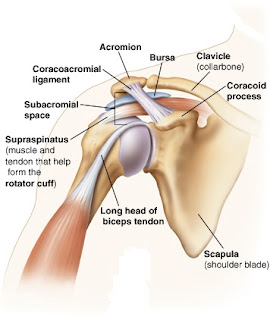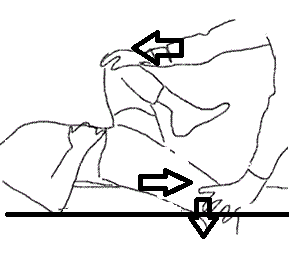BUSTING THE MYTHS
7 Myths about Physiotherapy.
The word “myth” is derived from a Greek word “mythos” meaning “story”.
It expresses a culture, which has been followed since ancient times, an old
practice, thoughts and values. These are the stories which are now considered
to be exaggerated. It often includes the misconceptions about something which
is being continued to believe even today.
Physiotherapy is an old practice,
which came into existence in 460 BC by physicians like Hippocrates. They introduced
the idea of manual manipulation, hydrotherapy and massage therapy. Per Henrik ling,
known to be “Father of Gymnastics”, founded the Royal Central Institute of
Gymnastics in 1813 and introduced exercise. By the end of 19th
century, modern physiotherapy was established.
Myth #1- Physiotherapy is all about massage.
Most of us believe that “physiotherapists
are the massage therapists”. Hold on there! “Physiotherapists” are “physiotherapists”
specialized in physical medicine and rehabilitation, remediating impairments by
using mechanical forces and movements to promote mobility, improving quality of
life, diagnosis of illness, prognosis and use of physical interventions. “Massage
therapists” may or may not be a physiotherapist who is specialized in
therapeutic massage for treating several conditions. “Massage” in physiotherapy
is “purely therapeutic”, which is designed in a particular manner according to
patient’s condition. Massage therapy includes several techniques and
biodynamics, which is highly effective in sedation, lymph drainage, releasing
muscle tension and other biological and medical advantages.
Fact: “physiotherapy in not all about
massage, but therapeutic massage constitutes a part of it”.
Myth #2- You need a referral to see a
physiotherapist.
Whenever we suffer from a bodily
condition, specifically pain in joints, bones and muscles, muscle stiffness,
and other conditions, we always rush to the orthopedician, settle appointments,
go for radiological exams, pay another visit to the orthopedics doctor and
finally one day get a referral from the doctor saying “you’ll have to see a
physiotherapist for treatment”. Well, there’s a good news for you, cut it
short, and directly see a physiotherapist, get the radiological exams done, and
begin with the treatment then and there. It is not required for you to follow
such a long process of recovery. Physiotherapists are absolutely eligible for
diagnosis, prognosis and cure.
Fact: “you do not need a referral
from an orthopedic doctor to see a physiotherapist”.
Myth #3- Physiotherapists are the gym guys. (Personal trainers and fitness advisers)
Physiotherapists are the health care
professionals, who can guide you in preventing injury and recovering from
injury with the help of “therapeutic exercise”, whereas, personal trainers and
fitness advisors are the professionals dealing with body building, guide you
with a diet plan, body toning, slimming and weight control.
Fact: “physiotherapists are the
doctors of physical rehabilitation and gym professionals are the trainers
helping you maintain an optimum body composition”.
Myth #4- Physiotherapy clinic is the slimming center.
A Physiotherapy set up comprises of equipment,
machines, and tools, required to carry out a treatment and rehabilitation
program according to patient’s condition. Whereas slimming center includes
equipment and devices specifically designed for weight loss and body weight
control.
Fact: “physiotherapy clinic is not
the slimming center”.
Myth #5- You can do physiotherapy on
your own.
Physiotherapist are the health care
professionals who are qualified in a bachelors, master’s, and Ph.D. in
Physiotherapy and are highly trained in physical rehabilitation. They take
proper care of their patients and are aware of pros and cons. So, if you try to
take up the responsibility on your own, you might land yourself up in trouble. Your
participation during the treatment is very important and plays a major role in
recovery, but you need expert care and guidance by a licensed physiotherapist. Your
physiotherapist will make a proper plan keeping in mind your current situation,
a proper assessment and diagnosis is carried out. Proper information and
understanding of the treatment plan is given to the patient before beginning
with the treatment.
Fact: “don’t take a risk of trying
physiotherapy on your own”.
Myth #6- Physiotherapy means exercise.
Exercise comprises a major portion of
physiotherapy program which is designed for patient. But it consist of several
other components as well. The other components include, balance and gait
training, therapeutic massage, orthotics and prosthesis, patient education,
pain management, respiratory care, manual manipulations, mobilization and gliding,
precautions, etc.
Fact: “exercise is a part of
physiotherapy and not the physiotherapy”.
Myth #7- Physiotherapy is a short duration course.
Physiotherapy do offers certificate
and diploma courses, but a full-fledged physiotherapy course is designed as a four and a half years of Bachelors of physiotherapy (BPT) or a three year BSc. In physiotherapy
course, followed by a two years of Master’s degree in specialized fields such
as neurology, sports, orthopedics, cardiopulmonary, geriatrics, gynecology,
pediatrics, kinesiology, exercise therapy, pain management, community based rehabilitation
etc. which is further followed by a Ph.D after post-graduation. So it’s really
not a piece of cake, entering the physiotherapy departments of the hospitals and
trust me it takes a lot of courage and hard work before you are expert in this field.
Fact: “physiotherapy course is
challenging and requires mental and physical efforts”.
Take care,
Jasrah.





Comments